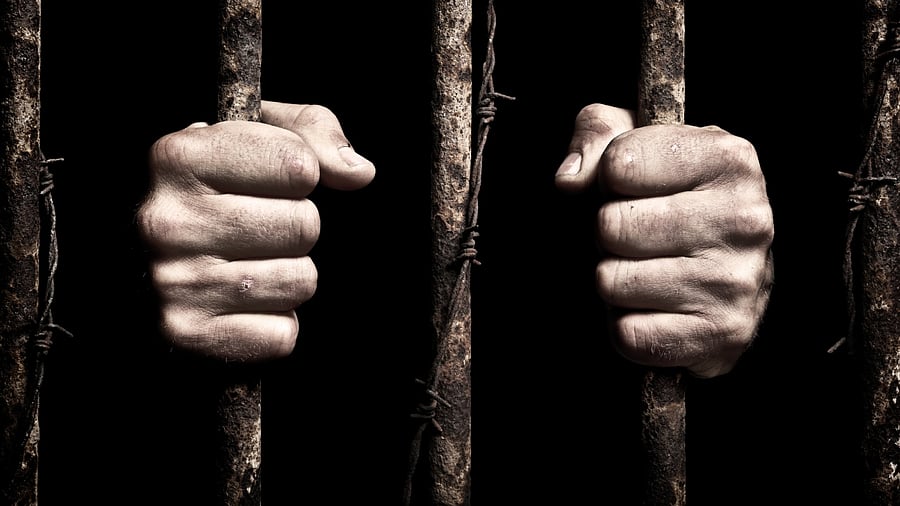
Recently a question in Parliament raised concerns about issues of prisoners in India’s jails, including matters of overcrowding, and their treatment. The response gave data as answer, and evidently led to believe that every care needed has been provided for. However, according to the prison statistics of India report (2021), out of 554,034 prisoners, 427,165 (76 percent) were undertrials. The occupancy rates at 130.2 percent (2021) indicates overcrowding.
The confinement of humans in prisons, mental institutions, and refugee camps is a complex issue with multiple factors and root causes. Despite awareness around what we consider personal freedom, we have demonstrated lack of societal interest, and sufficient funding in issues of overcrowded and inhospitable segregation zones. The societal mental conditioning believes in punishment, that’s reflected in our regulations and laws. Philosophy and practice to rehabilitate individuals to become contributing members of the society is missing. This approach would require a shift in thinking from punishment to treatment, addressing the root causes of the individual's behaviour. In the Rigveda, one of the oldest Vedic texts, freedom is praised as one of the highest values that a human being can possess.
Refugee Camps: Refugees often flee their homes due to violence, persecution, or other crises. Improving living conditions in refugee camps, providing access to education, and offering opportunities for employment and self-sufficiency can help refugees live more dignified lives while they await resettlement. However, these camps quickly become overcrowded, and inhospitable, with poor sanitation, lack of clean water, and a shortage of food and medical care. This can lead to the spread of disease, and can make life in the camps unbearable for the refugees.
Mental Health Institutions: Mental health institutions are intended to provide care and treatment for people with mental illness, but overcrowding can lead to poor living conditions and a lack of access to treatment. Patients may be forced to share rooms with many other people or may be kept in solitary confinement for long periods of time. This can exacerbate their mental health problems and make their lives even more difficult. Mental health services are often underfunded and understaffed, leading to inadequate care for those in need.
Prisons: Prisons are intended to hold people who have been convicted of crimes, but overcrowding is a common problem. Overcrowding can lead to a lack of space, poor sanitation, and a shortage of resources such as food and medical care. In July, the then Chief Justice of India said that there were 610,000 people jailed in India’s 1,378 prisons, meant to accommodate 400,000, and the numbers only increase.
This belittles the principle that ‘bail is the rule and jail is an exception’ laid out under Article 21 of the Constitution. Alternatives to incarceration, such as community service, drug treatment programmes, and restorative justice programmes, can address the root causes of criminal behaviour and reduce the number of individuals confined in prisons. Many countries are rethinking their approach to criminal justice, including the use of confinement as a form of punishment.
Social mindset
All the above are lessons for us in urban planning essentially, and societal mindset and bias towards the way we see people whom we feel we don’t need. Being confined to a small space or limited environment for long periods of time can lead to mental health issues such as depression, anxiety, and mood disorders. While in an activism-led world that we live in, conversations on these must go deep, and not simply a social-media likes. Yet the social sympathy and the necessary existential consciousness around this is non-existent.
The way we design our cities and communities can have a significant impact on how citizens experience confinement. For example, green spaces and pedestrian-friendly streets can provide opportunities for physical activity and exposure to natural light, while compact, walkable neighbourhoods can help combat feelings of isolation. The way we approach society, confinement, and rehabilitation today will have a significant impact on the future.
By prioritising rehabilitation over punishment, providing mental health resources, leveraging technology, and designing cities and communities that promote well-being, we can create a future that is more equitable, healthy, and fulfilling for everyone.
But then, how do we change mindsets about other humans that society feels is not needed? Respecting others’ dignity and equal access to well-being could be a start.
(Srinath Sridharan is an author, policy researcher, and corporate adviser. Twitter: @ssmumbai. Steve Correa is executive coach, OD consultant, and author. Twitter: @SteveCorrea1122.)
Disclaimer: The views expressed above are the authors' own and do not necessarily reflect the views of DH.